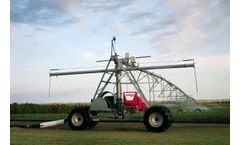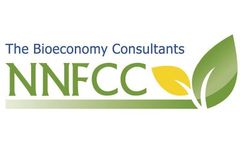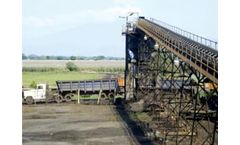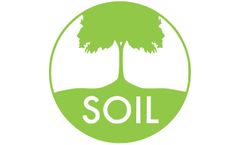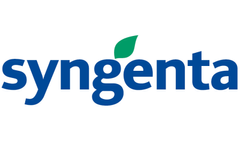Sugar Cane Articles & Analysis
19 articles found
Key Difference between Lateral Move Irrigation and Centre Pivot Sprinklers, and What to Consider when Buying Lateral move irrigation systems, similar to center pivots, are a great solution for large fields. While center pivots rotate around a fixed point, laterals move continuously along the field’s length. This self-propelled design covers nearly 98% of the field area uniformly. The ...
Canary Island Grape Trial: AZOMITE was placed on one half of a vineyard that was to be cut down and replanted because the previous years’ plants had low flower yields. AZOMITE was applied to both the soil and sprayed on the leaves and vines. ...
In Hawaii, over 40,500 hectares of sugar cane and pineapple are subsurface drip irrigated of which several thousand hectares are subsurface drip irrigated with reclaimed water. A high percentage of the drip irrigation development work in Hawaii was done in sugar cane through the Hawaiian Sugar Planters' ...
In Hawaii, more than 100,000 acres of sugar cane and pineapple are drip-irrigated. A high percentage of the drip irrigation development work in Hawaii was done in sugar cane through the Hawaiian Sugar Planters’Association and the University of Hawaii. ...
The BiOBUDDi building blocks will allow them to build castles, robots and spaceships out of biobased plastics made from sugar cane. Not sure the blocks will be any less painful when you step on them barefoot though! ...
On sugar plantations, cane waste solids called “cachaza” are produced as a by-product. This cachaza is separated from the sugar cane juice and composted for use as a fertilizer. The plantation’s management wanted to increase efficiency of composting in order to reduce labor and increase the capacity of their ...
Historically, SOIL has used a blend of sugar cane husk and peanut shells as the carbon cover material, but – especially as many local sugar and rum companies start to use the byproduct to power their operations – the supply is ultimately limited. ...
Diuron Diuron is a broad-spectrum herbicide, most commonly used by the sugar cane industry in Australia. Due to concerns over its toxicity, and the threat posed to people, a Diuron ban was implemented by the Australian Pesticides and Veterinary Medicines Authority (APVMA) in 2011. ...
This included avocado (Persea americana), corn (Zea mays), guava (Psidium guajava), mango (Mangifera indica), sorghum (Sorghum bicolor), sugar cane (Saccharum sp.), and tiger’s claw (also referred to as wiliwili; Erythrina variegata). ...
This is quite common street business found everywhere in India. Sugarcane juice vendors extract sugarcane juice in presence of customers and serve the glasses of fresh juice to the people. Mostly this business is on the street, very rarely in shops. Small sugarcane crushers are mostly driven by 1 hp motor where repeated crushing is done many times to extract enough juice. Hand operated ...
A survey was conducted among 387 sugar cane farmers who were interviewed at the Thamaka sugar refinery, Kanchanaburi Province, Thailand. ...
The idea is to use the land to cultivate crops such as banana, sugar cane, avocado, quinoa and passion fruit. But although the main aim is to boost food exports, small scale farmers may not be benefit, says Manuel Paulet-Iturri, a specialist in soil and water management, who previously worked at the Inter-American Institute for Cooperation on Agriculture. ...
Some changes in the floodplain were for the benefit of large-scale agriculture, such as the production of water-intensive sugar cane in the Senegal River Basin around Lac de Guiers, Senegal’s largest freshwater lake and Dakar’s freshwater supply. ...
PLENE is an innovative yield-increasing technology for sugar cane, due to be launched in 2011. PLENE sugar cane segments are treated with seed care applications to protect them in early growth stages. Planting is faster and easier than conventional methods. This will reduce the costs of sugar ...
BySyngenta
Composting is an organic sludge management option in which volatile solids are converted to carbon dioxide and water. As the sugar cane press mud undergoes aerobic composting, the bed heats–up to a temperature in the range of 50–70°C, releasing thermal energy and the heat liberated was extracted using a heat pipe. ...
A drought-resistant variety with 30% more fibre Al Costa, head of the Alkol consultancy, champions the return of sugar-cane growing to Spain as it is a highly versatile raw material for bioenergy and ideal conditions for it exist in many regions of the country. ...
Increasing water application in this study resulted in increased growth but no significant differences in cane or sugar yields. Water use efficiency therefore increased as water application declined, averaging 8.4 Mg cane mL–1 of water, including both rainfall and irrigation. Nitrogen application through the drip system resulted in linear ...
Based on recent ethnographic research, this paper discusses the innovative governance strategies used by a state-owned sugar mill in a rural township in the southwestern province of Yunnan in order to survive within a changing economic environment. ...
Examples include forestry residues, wood bark agricultural residues such as sugar cane bagasse. The Company has successfully converted each of these residues into BioOil and char making them a renewable and environmentally friendly oil and char reserve that is available ...

